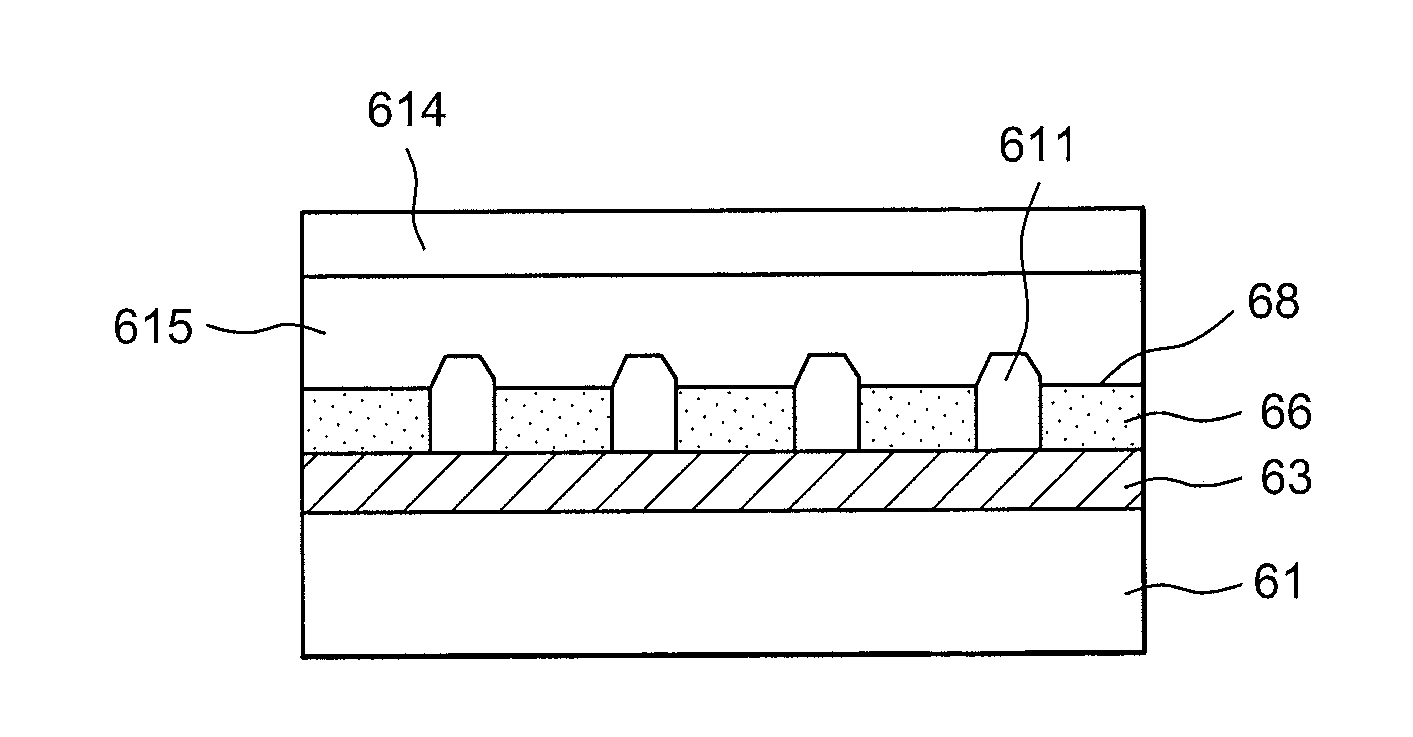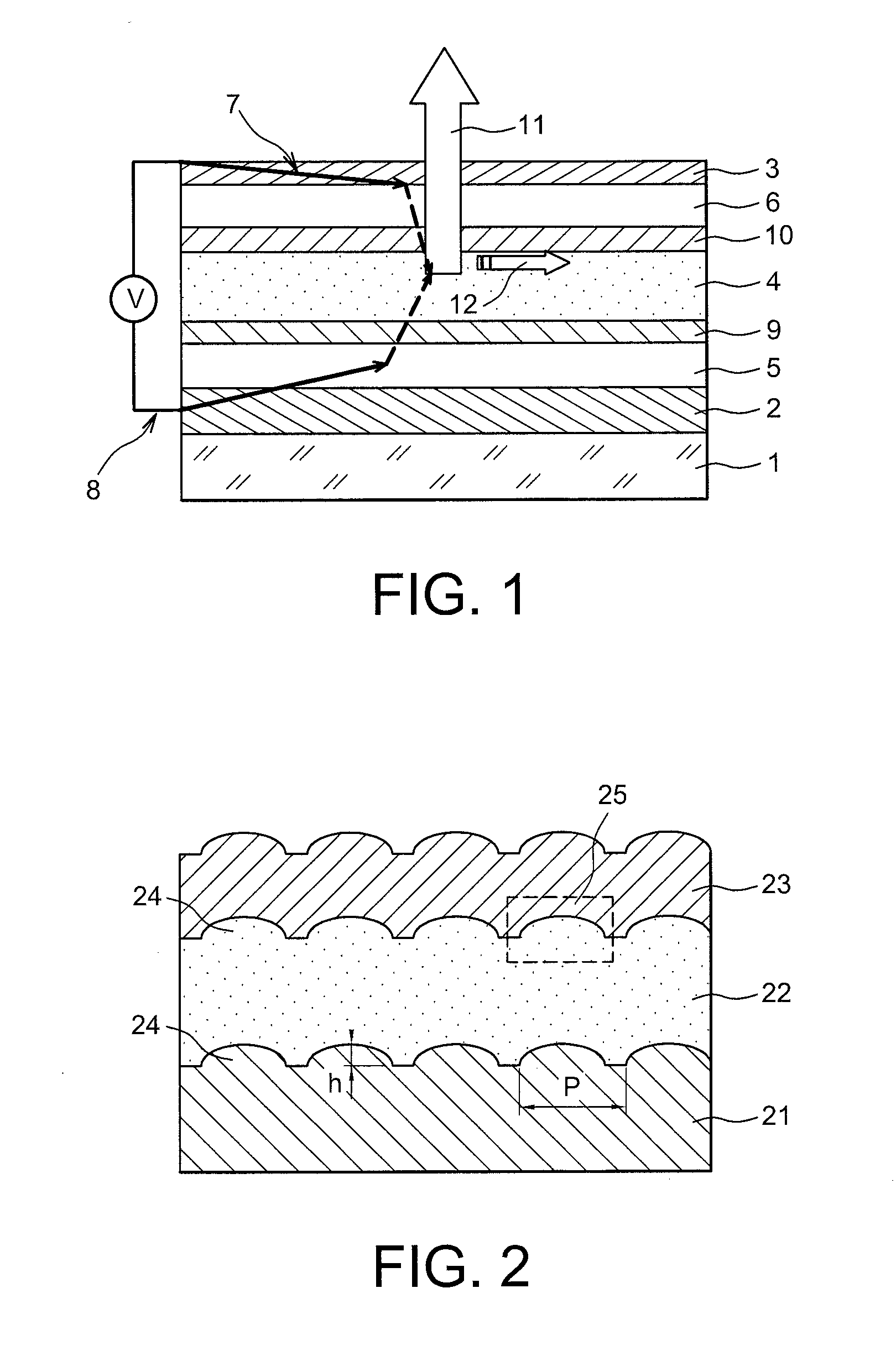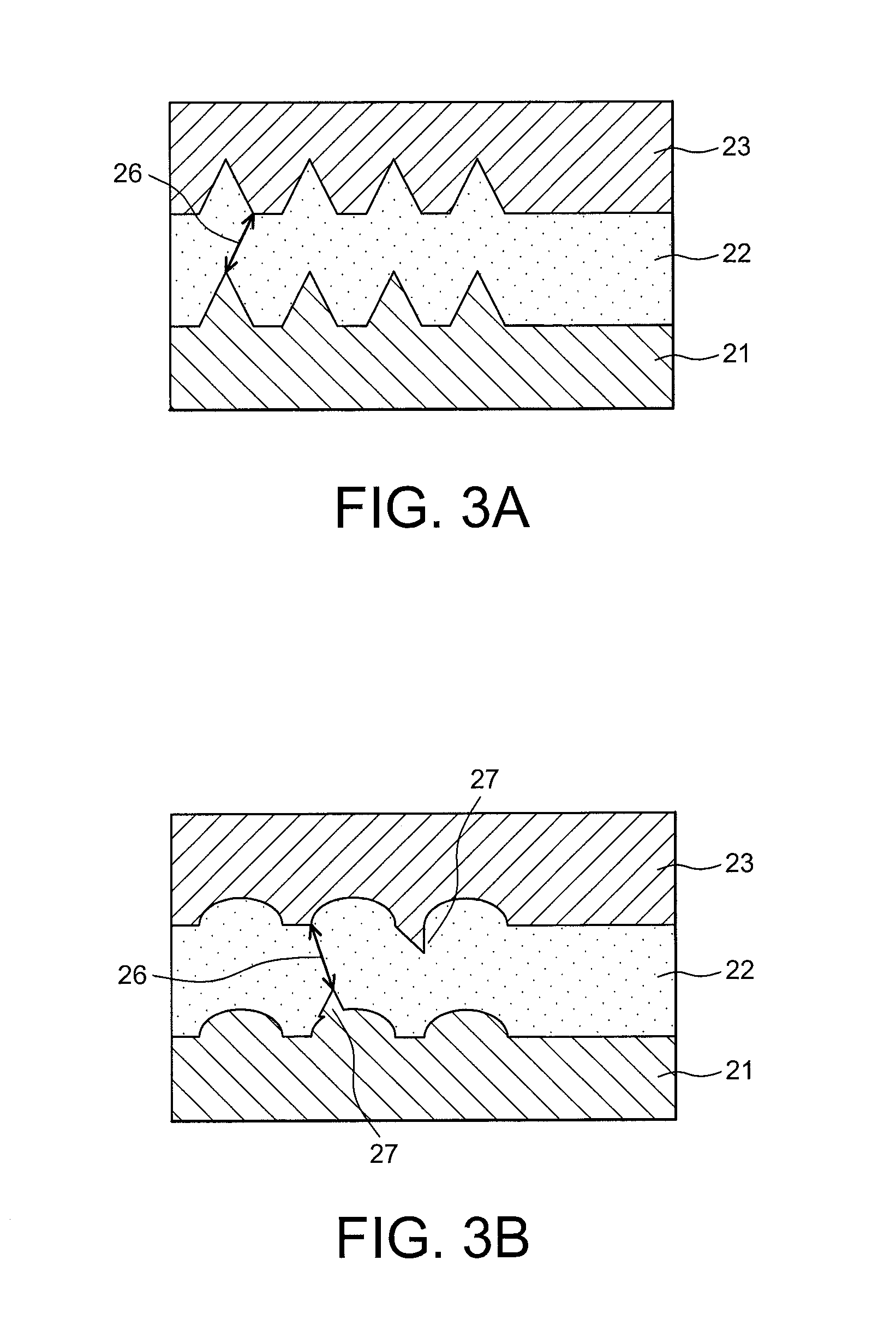Method for manufacturing a metal and dielectric nanostructures electrode for colored filtering in an OLED and method for manufacturing an OLED
a technology of dielectric nanostructures and dielectric nanostructures, which is applied in the direction of semiconductor/solid-state device manufacturing, electric devices, solid-state devices, etc., can solve the problems of short circuit between electrodes, unusable oled stack, and poor resistance of the emitted molecules of these layers to all the treatments
- Summary
- Abstract
- Description
- Claims
- Application Information
AI Technical Summary
Benefits of technology
Problems solved by technology
Method used
Image
Examples
example 1
[0245]In this example, a substrate is prepared by the method according to the invention using a thermosetting resin, and then an organic light-emitting diode is prepared on said substrate by the method according to the invention.
[0246]The method for preparing the substrate comprises the following successive steps:[0247]Deposition by PVD of the metal layer, for example in platinum or of a conducting layer with a thickness of 10 nm on the substrate;[0248]Deposition (or coating) of the commercially available thermosetting resin Neb® 22 of Sumito Chemical Japan on an 8 inch silicon wafer;[0249]Compression of the resin at 110° C. for 5 minutes under 300 mbars, by means of which a first nanostructuration is obtained which is a lattice of lines or a lattice of pads with a period from 200 nm to 600 nm and heights from 5 nm to 40 nm;[0250]After printing, plasma etching of the so-called residual resin layer which is present under the printed patterns in order to expose the substrate and the m...
example 2
[0256]In this example, a conductive or metal layer for example in TIN is deposited on a substrate. Next, a dielectric material layer is deposited (for example a 100 nm layer of silicon dioxide).
[0257]On this dielectric layer, optical lithography is carried out (at a wave length of 193 nm) with a commercial resin such as a resin available at Rohm and Haas, Clariant or Tok, for making lattices of lines or holes, the periods of which range from 200 nm to 600 nm.
[0258]After developing the resin, the dielectric layer is etched right up to the level of the conductive layer by plasma or wet etching.
[0259]Next, the remaining resin is removed (stripped) so as to only leave the structured dielectric layer on the conductive layer.
[0260]Growth of the structures by electrochemistry in the thereby formed cavities is accomplished.
[0261]The produced patterns will have a height slightly larger than the height of the structures made in the dielectric layer in order to create a topography relative to ...
PUM
| Property | Measurement | Unit |
|---|---|---|
| height | aaaaa | aaaaa |
| height | aaaaa | aaaaa |
| height | aaaaa | aaaaa |
Abstract
Description
Claims
Application Information
 Login to View More
Login to View More - R&D
- Intellectual Property
- Life Sciences
- Materials
- Tech Scout
- Unparalleled Data Quality
- Higher Quality Content
- 60% Fewer Hallucinations
Browse by: Latest US Patents, China's latest patents, Technical Efficacy Thesaurus, Application Domain, Technology Topic, Popular Technical Reports.
© 2025 PatSnap. All rights reserved.Legal|Privacy policy|Modern Slavery Act Transparency Statement|Sitemap|About US| Contact US: help@patsnap.com



